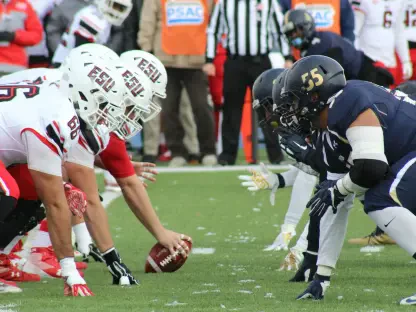In the wake of a tragic incident at Utah Valley University, where conservative activist Charlie Kirk was fatally shot, a chilling wave of right-wing doxing campaigns has surged across American higher education, targeting faculty and staff with unprecedented ferocity. Doxing, the malicious act of publicly exposing personal information such as names, contact details, and photos to incite harassment, has become a weapon to punish academics for their social media comments about Kirk’s death. This alarming trend not only jeopardizes individual safety but also raises profound concerns about the state of free expression on college campuses. As social media amplifies these attacks at lightning speed, universities find themselves caught between protecting their employees and succumbing to intense external pressures. The implications of this crisis stretch far beyond isolated cases, challenging the very principles that underpin academic freedom and open dialogue in educational institutions.
Understanding the Doxing Crisis
Scale and Impact of Campaigns
The breadth of the current doxing campaign is staggering, with at least 37 faculty and staff members across various U.S. universities identified as targets following the incident involving Charlie Kirk. Institutions such as Auburn University, Clemson University, and Coastal Carolina University have been thrust into the spotlight as coordinated online attacks, often fueled by anonymous social media accounts, expose personal details of academics with ruthless efficiency. Of those targeted, a significant number—24 at last count—have faced severe repercussions, including suspensions, terminations, or forced administrative leaves. This rapid escalation, driven by groups claiming to have amassed databases of thousands of names, reveals a deliberate strategy to intimidate and silence voices within academia. The sheer volume of these efforts underscores a critical challenge for higher education, where the personal safety of employees is increasingly at odds with public-facing roles.
Beyond the raw numbers, the institutional fallout from these campaigns paints a troubling picture of vulnerability within universities. At Clemson University, for instance, the intense scrutiny from online activists and conservative politicians has led to swift disciplinary actions, often bypassing thorough internal reviews. Other institutions, like Eastern New Mexico University–Roswell, have similarly struggled to balance public outrage with the need to support their staff. The ripple effects extend to campus morale, where fear of being targeted stifles open communication among educators and administrators alike. This climate of intimidation not only disrupts the day-to-day operations of universities but also threatens their reputation as bastions of free thought. As these attacks grow in sophistication, the pressure on higher education to develop robust protective measures becomes ever more urgent.
Nature of Targeted Speech
The content of the social media posts targeted by doxing campaigns spans a wide spectrum, reflecting the complex nature of public discourse in a polarized environment. Initially, the focus was on overtly inflammatory remarks, such as those from a professor who posted highly offensive language about Kirk’s death, resulting in immediate administrative action. However, the scope has since expanded to include far less provocative statements, such as a staff member at Wake Forest University quoting song lyrics that were interpreted as critical, or a faculty member at East Tennessee State University referencing Kirk’s own public statements on gun issues. This broadening of targets suggests a disturbing trend where even nuanced or contextual expressions are deemed punishable. The variability in what constitutes “offensive” speech raises critical questions about who gets to define acceptable discourse in academic spaces.
Moreover, the expanding scope of these campaigns indicates a shift from addressing clear misconduct to a broader agenda of silencing dissent in any form. Academics who may have intended no malice, or whose posts were misinterpreted out of context, now find themselves in the crosshairs of online mobs seeking retribution. This overreach creates an environment where faculty and staff must second-guess every public statement, fearing that even mild critique could lead to personal exposure and professional ruin. The chilling effect of such tactics is palpable, as the boundaries of acceptable speech become increasingly blurred. This situation demands a reevaluation of how universities and society at large navigate the tension between accountability for harmful rhetoric and the protection of diverse perspectives in higher education.
Institutional and Legal Challenges
University Responses Under Pressure
Universities caught in the storm of these doxing campaigns often respond with alarming speed, frequently prioritizing public perception over the rights of their employees. At Clemson University, for example, the administration initially issued statements condemning certain social media posts as unacceptable but hesitated to specify disciplinary measures. However, under mounting pressure from conservative politicians and threats of defunding from state representatives, the institution ultimately terminated two faculty members and a staff member. This pattern of capitulation reflects a broader struggle among higher education leaders to withstand external demands while maintaining internal integrity. The haste in decision-making often sidelines due process, leaving targeted individuals with little recourse to defend themselves against accusations amplified by online outrage.
Additionally, the role of political influence in shaping university responses cannot be understated, as it reveals a troubling erosion of institutional autonomy. High-profile figures have publicly called for punitive actions against academics, with some even leveraging their platforms to rally support for funding cuts if universities fail to comply. This dynamic places administrators in an untenable position, forced to weigh the financial stability of their institutions against the principles of academic freedom. The result is a growing trend of preemptive disciplinary actions designed to appease critics rather than uphold constitutional protections for speech. Such responses not only undermine trust between faculty and administration but also set a dangerous precedent for how external forces can dictate internal policies in higher education.
Threat to Free Speech
The doxing campaigns targeting academics pose a direct threat to free speech, striking at the core of what universities stand for as spaces of open dialogue. Legal experts, including those from the Foundation for Individual Rights and Expression (FIRE), argue that while some of the targeted social media posts may be distasteful or controversial, much of the speech falls under protections guaranteed by the First Amendment. Despite this, university actions—such as suspensions and terminations—often disregard these legal safeguards, opting instead for damage control in the face of public backlash. This discrepancy between legal rights and institutional behavior creates a chilling effect, where faculty and staff may self-censor to avoid becoming targets. The erosion of these fundamental protections jeopardizes the ability of educators to engage in critical discourse without fear of retribution.
Furthermore, the current wave of harassment is not an isolated phenomenon but part of a recurring systemic issue within academia. Historical patterns show similar campaigns spiking in recent years, often directed at faculty advocating for contentious causes or belonging to marginalized groups. These past instances mirror the present crisis in their aim to suppress dissenting voices through intimidation rather than reasoned debate. The repetition of such tactics highlights a failure to address underlying vulnerabilities in how academic institutions handle external pressures. As digital platforms continue to amplify these attacks, the need for universities to reaffirm their commitment to free expression becomes paramount. Without such a stance, the foundational mission of higher education to foster intellectual freedom risks being irreparably compromised.
Broader Implications and Trends
Political Motivations and Vulnerabilities
At the heart of these doxing campaigns lies a clear political motivation, where the act of exposing personal information serves as a weapon to suppress ideological disagreement. Far from being solely a reaction to specific comments, these efforts appear designed to assert dominance in a deeply polarized cultural landscape. The targeting of academics often transcends the content of their speech, focusing instead on silencing perceived opponents of conservative viewpoints. This strategic use of harassment reveals a broader intent to control narratives within higher education, where faculty become pawns in a larger battle over values and influence. The political underpinnings of these campaigns underscore a critical challenge for universities striving to remain neutral spaces for intellectual exploration.
Equally concerning is the disproportionate impact of these attacks on certain groups within academia, particularly those who are already vulnerable. Faculty discussing sensitive topics such as race, gender, or international conflicts, as well as those from marginalized communities, face heightened risks of being targeted. This disparity points to deeper systemic inequities in how speech is policed and who bears the brunt of punitive measures. The pattern suggests that doxing is not merely a random act of online aggression but a calculated tool to reinforce existing power structures by intimidating those least equipped to withstand such pressure. Addressing this imbalance requires targeted protections and a recognition of the unique challenges faced by these academics in an increasingly hostile digital environment.
Digital Platforms and Historical Context
Social media has emerged as a pivotal force in the current doxing crisis, acting as both a catalyst and an amplifier for harassment campaigns. Platforms enable anonymous users and organized groups to swiftly identify targets, disseminate personal information, and mobilize outrage on a massive scale. The speed and reach of these digital tools have transformed isolated incidents into widespread movements, making it nearly impossible for individuals or institutions to mount a timely defense. This technological sophistication marks a significant evolution in how harassment is conducted, posing new challenges for universities tasked with safeguarding their communities. As these platforms continue to shape public discourse, their role in facilitating such attacks demands scrutiny and innovative strategies to mitigate harm.
Looking at the historical context, doxing as a tactic against academics is not a recent development but rather an escalation of longstanding patterns of intimidation. Over recent years, similar campaigns have targeted faculty engaging in controversial discourse, often with a focus on pro-Palestinian advocates or those challenging dominant narratives. The present wave stands out due to its intensity and the charged political climate surrounding Kirk’s death, yet it fits within a broader trend of using digital means to punish educators. This continuity suggests a systemic failure to address the root causes of such harassment, leaving higher education vulnerable to repeated cycles of attack. Recognizing this history is essential for developing lasting solutions that protect academic freedom against the backdrop of evolving digital and political pressures.
Safeguarding the Future of Academia
Reflecting on the crisis sparked by the doxing campaigns that followed Charlie Kirk’s tragic death, it’s evident that higher education faces a defining moment. The targeting of dozens of faculty and staff across numerous universities exposed not just personal vulnerabilities but systemic weaknesses in how institutions handle external threats. Swift disciplinary actions often bowed to political pressures, sidelining legal protections for speech and casting a shadow over academic freedom. The political motivations driving these attacks, amplified by social media’s reach, revealed a calculated effort to suppress dissent, disproportionately affecting marginalized academics.
Moving forward, universities must prioritize robust frameworks to shield their communities from digital harassment while staunchly defending free expression. Developing clear policies that resist external influence, coupled with training to navigate online risks, could fortify campus resilience. Collaborative efforts with tech platforms to curb the spread of personal information might also stem the tide of doxing. Ultimately, a renewed commitment to core values—upholding open dialogue over appeasement—stands as the strongest defense against future threats, ensuring that academia remains a space for fearless inquiry and diverse thought.









